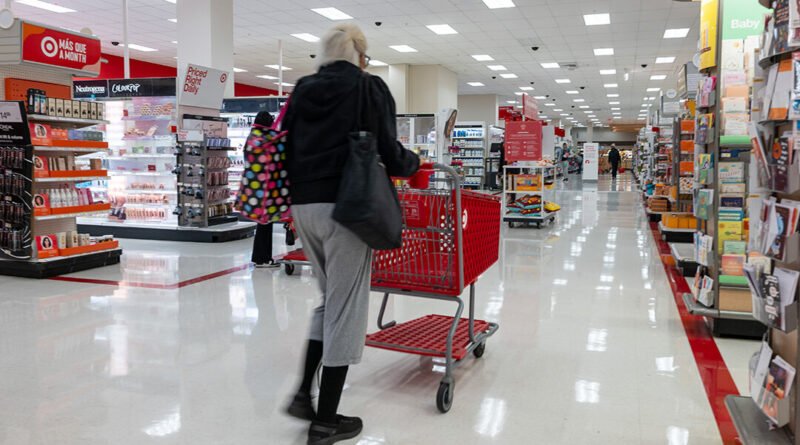The Increasing Challenge of Shoplifting and Retail Worker Safety in Canada
The percentage of Canadian businesses directly impacted by crime and community safety issues has more than doubled in the past year, now standing at 46%, according to Jairo Yunis from the Canadian Federation of Independent Business (CFIB).
Shoplifting is a significant concern for 61% of CFIB members surveyed, with numbers rising to almost 80% in Manitoba and Nova Scotia, according to preliminary survey results shared with The Epoch Times by Yunis.
Statistics Canada’s police-reported crimes report released in July also indicates a 47% increase in shoplifting nationwide since 2014. In 2023, shoplifting reached its highest rate since at least 1998 when StatCan began reporting.
Vandalism, breaking and entering, and other crime and safety issues are affecting many businesses, causing an increase in security costs and a decrease in customer foot traffic, Yunis noted. The most concerning aspect is the threat to the safety of workers and customers.
“Sometimes it appears that businesses are mainly concerned about their bottom lines, but they are also worried about the safety of customers and staff,” Yunis explained. “It’s really impacting them and causing a lot of stress because they are unsure how to handle it. Sometimes the police are unresponsive and lack the necessary tools to address these issues.”
Seventy percent of survey respondents expressed fear for the safety of staff and customers, Yunis added.
“It’s a scary situation out there. It is absolutely scary,” said Will Arnold, owner of Experience Cycling in Duncan, B.C., in an interview with The Epoch Times earlier this year. The community has changed significantly since Arnold first arrived in 1991, with open drug use, graffiti, and trash now common around his business.
He has installed security cameras and has a close relationship with the police, having had to call them frequently. While the police have been responsive, Arnold has also had to take matters into his own hands, recalling an incident where a knife was pulled on him outside his shop.
About 60% of business owners told CFIB that they are dissatisfied with law enforcement’s response. Many have stopped reporting crimes to the police due to long response times, cumbersome reporting processes, and a belief that it won’t make a difference, with 83% sharing this sentiment.
Responding to retail calls is challenging for the police as they are often stretched thin and focused on emergency calls, noted Art Stannard, acting chief of the Winnipeg Police Service.
“During this time of the year, our calls for service consistently exceed 200 in the queue, which means our officers are prioritizing emergency calls,” Stannard explained in a press release on July 10.
Manitoba’s Crime Wave, Police Response
Stannard welcomed a $1.16 million investment from the Manitoba government to combat retail and violent crime in Winnipeg. With this additional funding, police have increased their presence around shops, particularly downtown.
“We are definitely seeing a decrease in incidents,” stated Brian Sharfstein, owner of Canadian Footwear in downtown Winnipeg, in the release. “These officers are building trust and confidence among the working people and the general public in the area. Other business owners have also expressed satisfaction with the visible police presence.”
The Manitoba government also provides a $300 rebate for retailers to enhance safety and security.
Almost 60% of Manitobans are concerned about witnessing shoplifting or encountering violence at a store, as indicated by a poll by Probe Research published in June.
Manitoba has experienced a significant increase in overall crime in the past decade, with StatCan’s latest crime report showing a 33% rise in the total crime rate since 2013. The largest increases were observed in New Brunswick (37%) and Nunavut (73%).
In the CFIB survey, 77% of business owners in Manitoba reported issues with shoplifting, making it the province with the second-highest number of affected businesses after Nova Scotia, where 78% reported problems.
When Shoplifting Began to Spike
StatCan’s crime report indicates that the rate of shoplifting remained relatively stable from 2000 to 2014 (around 230 to 260 incidents per 100,000 population), after which it began to increase.
There was a notable spike in 2018 (337 per 100,000) and continued into 2019 (373 per 100,000). While the numbers decreased during the pandemic to around 240 per 100,000, they rose rapidly again in 2022 to 329 per 100,000. By 2023, the rate had reached 387 per 100,000.
Shoplifting is not just a problem in Canada. In England and Wales, reports show that shoplifting has reached a 20-year high. California recently passed a bill allowing retailers to obtain restraining orders against thieves to address retail theft.
Yunis emphasized that shoplifting and safety concerns compound the challenges facing businesses currently, including factors such as higher interest rates, inflation, and decreased demand.





